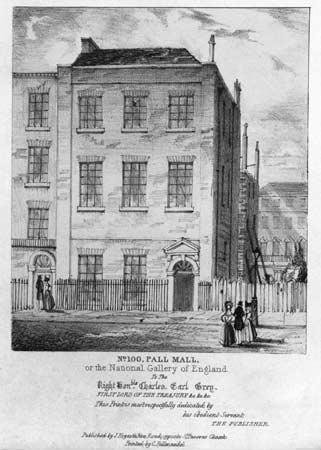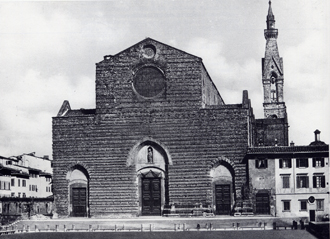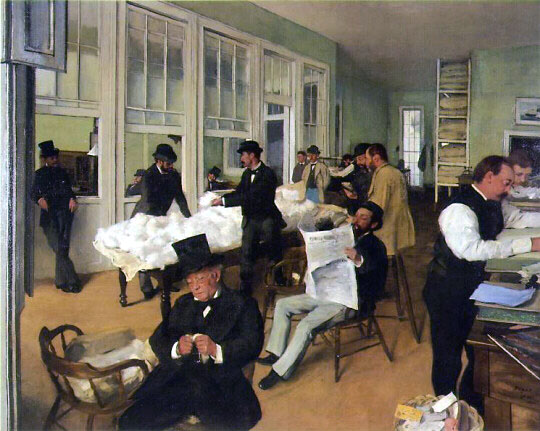|
Dillian Gordon
Dillian Rosalind Gordon OBE is a British art historian who worked as a curator at the National Gallery, London from 1978 to 2010, latterly as Curator of Italian Paintings before 1460. She lives in Oxford. She was appointed OBE in 2011 for services to Early Italian Painting. She has authored and co-authored many books, including several National Gallery catalogues. Education Dillian Gordon studied Modern and Medieval Languages at Girton College, Cambridge. She then attended the Courtauld Institute of Art, University of London, where she completed her MA in 1972, with a dissertation on 'The gilded glass Madonna in the Fitzwilliam, Cambridge', followed by a PhD in 1979, 'Art in Umbria c.1250-c.1350', also at the Courtauld. Photographs taken by Gordon while a student are held in the Conway Library at the Courtauld, and are currently (2020) being digitised. Professional work Gordon worked at the National Gallery, London, as a curator of early Italian paintings from 1978 until ... [...More Info...] [...Related Items...] OR: [Wikipedia] [Google] [Baidu] |
National Gallery
The National Gallery is an art museum in Trafalgar Square in the City of Westminster, in Central London, England. Founded in 1824, it houses a collection of more than 2,300 paintings dating from the mid-13th century to 1900. The current director of the National Gallery is Gabriele Finaldi. The National Gallery is an exempt charity, and a non-departmental public body of the Department for Culture, Media and Sport. Its collection belongs to the government on behalf of the British public, and entry to the main collection is free of charge. Unlike comparable museums in continental Europe, the National Gallery was not formed by nationalising an existing royal or princely art collection. It came into being when the British government bought 38 paintings from the heirs of John Julius Angerstein in 1824. After that initial purchase, the gallery was shaped mainly by its early directors, especially Charles Lock Eastlake, and by private donations, which now account for two-third ... [...More Info...] [...Related Items...] OR: [Wikipedia] [Google] [Baidu] |
Cosimo De' Medici
Cosimo di Giovanni de' Medici (27 September 1389 – 1 August 1464) was an Italian banker and politician who established the House of Medici, Medici family as effective rulers of Florence during much of the Italian Renaissance. His power derived from his wealth as a banker and intermarriage with other rich and powerful families. He was a patron of arts, learning, and architecture. He spent over 600,000 gold florins (approx. $500 million inflation adjusted) on art and culture, including Donatello, Donatello's ''David (Donatello, bronze), David'', the first freestanding Nude (art), nude male sculpture since antiquity. Despite his influence, his power was not absolute; he was viewed by fellow Florentine politicians as first among equals rather than an autocrat.Martines, Lauro (2011). ''The Social World of the Florentine Humanists, 1390–1460''. University of Toronto Press. p. 8. Florence's legislative councils resisted his proposals throughout his political career, even sending h ... [...More Info...] [...Related Items...] OR: [Wikipedia] [Google] [Baidu] |
Albrecht Dürer
Albrecht Dürer ( , ;; 21 May 1471 – 6 April 1528),Müller, Peter O. (1993) ''Substantiv-Derivation in Den Schriften Albrecht Dürers'', Walter de Gruyter. . sometimes spelled in English as Durer or Duerer, was a German painter, Old master prints, printmaker, and history of geometry#Renaissance, theorist of the German Renaissance. Born in Free Imperial City of Nuremberg, Nuremberg, Dürer established his reputation and influence across Europe in his twenties due to his high-quality List of woodcuts by Dürer, woodcut prints. He was in contact with the major Italian artists of his time, including Raphael, Giovanni Bellini and Leonardo da Vinci, and from 1512 was patronized by Holy Roman Emperor, Emperor Maximilian I, Holy Roman Emperor, Maximilian I. Dürer's vast body of work includes List of engravings by Dürer, engravings, his preferred technique in his later prints, Altarpiece, altarpieces, portraits and self-portraits, watercolours and books. The woodcuts series are stylist ... [...More Info...] [...Related Items...] OR: [Wikipedia] [Google] [Baidu] |
Giotto
Giotto di Bondone (; – January 8, 1337), known mononymously as Giotto, was an List of Italian painters, Italian painter and architect from Florence during the Late Middle Ages. He worked during the International Gothic, Gothic and Italian Renaissance painting#Proto-Renaissance painting, Proto-Renaissance period. Giotto's contemporary, the banker and chronicler Giovanni Villani, wrote that Giotto was "the most sovereign master of painting in his time, who drew all his figures and their postures according to nature" and of his publicly recognized "talent and excellence".Bartlett, Kenneth R. (1992). ''The Civilization of the Italian Renaissance''. Toronto: D.C. Heath and Company. (Paperback). p. 37. Giorgio Vasari described Giotto as making a decisive break from the prevalent Byzantine art, Byzantine style and as initiating "the great art of painting as we know it today, introducing the technique of drawing accurately from life, which had been neglected for more than two hundred ... [...More Info...] [...Related Items...] OR: [Wikipedia] [Google] [Baidu] |
Nardo Di Cione
Nardo di Cione (died c. 1366) was an Italian painter, sculptor and architect from Florence. He was the brother of the more accomplished Andrea di Cione, called Orcagna, as well as Jacopo di Cione; they were important members of the Painters Guild of Florence. While Orcagna has been noted as the more accomplished artist, Nardo developed his own unique style, described as "a pronounced lyrical vein, a feeling for poetic values, strong human sympathies and great sensitivity to colour as a means of subtle differentiation and soft modeling". Life The Di Cione brothers collaborated on a number of works from their studio together, including the decorations from the Cappella Strozzi in Santa Maria Novella. While Orcagna painted the altarpiece, Nardo executed the frescoes of The ''Last Judgment'', ''Paradise'' and ''Hell''. Of Nardo's independently attributed works is his ''Crucifixion'', a central panel of a tabernacle. In the predella of the piece are depictions of Saints Jerome, ... [...More Info...] [...Related Items...] OR: [Wikipedia] [Google] [Baidu] |
Ugolino Di Nerio
Ugolino di Nerio (1280? – 1349) was an Italian Painting, painter active in his native city of Siena and in Florence between the years 1317 and 1327. He was a follower of Duccio di Buoninsegna, from whose Maestà (Duccio), Maestà some of his scenes are clearly derived. He was a leading master who contributed to the spread of Sienese painting in Florence by earning commissions to paint in the two main basilicas there, Santa Maria Novella and Basilica of Santa Croce, Florence, Santa Croce. Biography and works Nerio was born around 1280 in Siena to a family of painters. His father as well as his siblings, Guido and Muccio, were artists. His only known signed work is his altarpiece for the main altar of Saint Croce, dated around 1325. The signature is now lost but was recorded by Vasari. The work was moved from the main altar in 1566 to make way for a Ciborium (architecture), ciborium designed by Vasari. It was reassembled in the friars' dormitory where it remained until, at so ... [...More Info...] [...Related Items...] OR: [Wikipedia] [Google] [Baidu] |
Santa Croce, Florence
The ( Italian for 'Basilica of the Holy Cross') is a minor basilica and the principal Franciscan church of Florence, Italy. It is situated on the Piazza di Santa Croce, about 800 metres southeast of the Duomo, on what was once marshland beyond the city walls. Being the burial place of notable Italians, including those from the Italian Renaissance such as Michelangelo, Galileo, and Machiavelli, as well as the poet Foscolo, political philosopher Gentile and the composer Rossini, it is also known as the Temple of the Italian Glories (). Building The basilica is the largest Franciscan church in the world. Its most notable features are its sixteen chapels, many of them decorated with frescoes by Giotto and his pupils, and its tombs and cenotaphs. Legend says that Santa Croce was founded by St Francis himself. The construction of the current church, to replace an older building, was begun on 12 May 1294, possibly by Arnolfo di Cambio, and paid for by some of the city's wealthi ... [...More Info...] [...Related Items...] OR: [Wikipedia] [Google] [Baidu] |
Wilton Diptych
The Wilton Diptych (made ) is a small portable diptych of two hinged panels, painted on both sides, now in the National Gallery, London. It is an extremely rare survival of a late medieval religious panel painting from England. The diptych was painted for King Richard II of England, who is depicted kneeling before the Virgin and Child in what is known as a donor portrait. He is presented to them by (left to right) the English saints King Edmund the Martyr, King Edward the Confessor and patron saint, John the Baptist. The painting is an outstanding example of the International Gothic style, and the nationality of the unknown artist is probably French or English. Description The Wilton Diptych is painted on two panels of Baltic oak, set in frames of the same material and joined by two hinges so that it may be closed to protect the inner painting. The inner faces of the panels are in excellent condition for their age, though some glazes have been lost, and the outer faces have pai ... [...More Info...] [...Related Items...] OR: [Wikipedia] [Google] [Baidu] |
Edgar Degas
Edgar Degas (, ; born Hilaire-Germain-Edgar De Gas, ; 19 July 183427 September 1917) was a French Impressionist artist famous for his pastel drawings and oil paintings. Degas also produced bronze sculptures, prints, and drawings. Degas is especially identified with the subject of dance; more than half of his works depict dancers. Although Degas is regarded as one of the founders of Impressionism, he rejected the term, preferring to be called a realist,Gordon and Forge 1988, p. 31 and did not paint outdoors as many Impressionists did. Degas was a superb draftsman, and particularly masterly in depicting movement, as can be seen in his rendition of dancers and bathing female nudes. In addition to ballet dancers and bathing women, Degas painted racehorses and racing jockeys, as well as portraits. His portraits are notable for their psychological complexity and their portrayal of human isolation. At the beginning of his career, Degas wanted to be a history painter, a callin ... [...More Info...] [...Related Items...] OR: [Wikipedia] [Google] [Baidu] |
Arts Council Of Great Britain
The Arts Council of Great Britain was a non-departmental public body dedicated to the promotion of the fine arts in Great Britain. It was divided in 1994 to form the Arts Council of England (now Arts Council England), the Scottish Arts Council (later merged into Creative Scotland), and the Arts Council of Wales. At the same time the National Lottery was established and these three arts councils, plus the Arts Council of Northern Ireland, became distribution bodies. History In January 1940, during the Second World War, the Council for the Encouragement of Music and the Arts (CEMA) was appointed to help promote and maintain British culture. Chaired by Lord De La Warr, President of the Board of Education, the council was government-funded and after the war was renamed the Arts Council of Great Britain. Reginald Jacques was appointed musical director, with Sir Henry Walford Davies and George Dyson also involved. John Denison took over after the war. A royal charter was g ... [...More Info...] [...Related Items...] OR: [Wikipedia] [Google] [Baidu] |
Thomas Gainsborough
Thomas Gainsborough (; 14 May 1727 (baptised) – 2 August 1788) was an English portrait and landscape painter, draughtsman, and printmaker. Along with his rival Sir Joshua Reynolds, he is considered one of the most important British artists of the second half of the 18th century. He painted quickly, and the works of his maturity are characterised by a light palette and easy strokes. Despite being a prolific portrait painter, Gainsborough gained greater satisfaction from his landscapes. He is credited (with Richard Wilson (painter), Richard Wilson) as the originator of the 18th-century British landscape school. Gainsborough was a founding member of the Royal Academy of Arts, Royal Academy. Youth and training Gainsborough was born in Sudbury, Suffolk, Sudbury, Suffolk, the youngest son of John Gainsborough, a weaver and maker of woollen goods, and his wife Mary, sister of the Reverend Humphry Burroughs. One of Gainsborough's brothers, Humphrey Gainsborough, Humphrey, is said t ... [...More Info...] [...Related Items...] OR: [Wikipedia] [Google] [Baidu] |
Peter Paul Rubens
Sir Peter Paul Rubens ( ; ; 28 June 1577 – 30 May 1640) was a Flemish painting, Flemish artist and diplomat. He is considered the most influential artist of the Flemish Baroque painting, Flemish Baroque tradition. Rubens' highly charged compositions reference erudite aspects of classical and Christian history. His unique and immensely popular Baroque style emphasised movement, colour, and sensuality, which followed the immediate, dramatic artistic style promoted in the Counter-Reformation. Rubens was a painter producing altarpieces, portraits, landscapes, and history paintings of mythological and allegorical subjects. He was also a prolific designer of cartoons for the Flemish tapestry workshops and of Book frontispiece, frontispieces for the publishers in Antwerp. Rubens was born and raised in the Holy Roman Empire (modern-day Germany) to parents who were refugees from Antwerp in the Duchy of Brabant in the Southern Netherlands (modern-day Belgium) and moved to Antwerp at ab ... [...More Info...] [...Related Items...] OR: [Wikipedia] [Google] [Baidu] |









